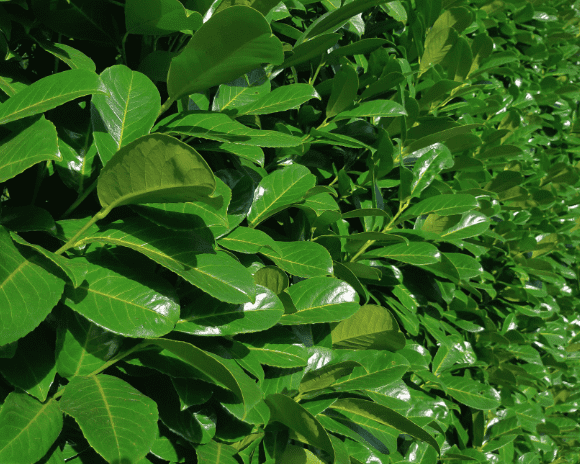
Cherry laurel (Prunus laurocerasus)
Cherry laurel, also known as Versailles Laurel, Common laurel
Cherry laurel (Prunus laurocerasus) is an evergreen shrub or small tree often used in landscaping for its aesthetic appeal. It features broad, glossy, dark green leaves that have a leathery feel. The plant produces fragrant white flowers in the spring, followed by small, black or dark purple berries in late summer.
### Characteristics:
- **Foliage**: Evergreen with shiny, dark green, and leathery leaves.
- **Flowers**: White, fragrant, and clustered, appearing in spring.
- **Berries**: Dark purple to black, forming in late summer.
- **Growth Habit**: Fast-growing and dense, suitable for hedges.
### Potential Dangers:
- **Toxicity**: Contains cyanogenic glycosides in its leaves and seeds, which can release cyanide when consumed, posing a poisoning risk.
- **Allergic Reactions**: Contact with the plant may cause skin irritation or allergic reactions in sensitive individuals.
- **Invasiveness**: Can become invasive in some regions, outcompeting native species and disrupting ecosystems.
### Summary:
Cherry laurel is a visually appealing and fast-growing plant ideal for hedging but should be handled with care due to its toxic components and potential to become invasive.
Key Facts About Cherry laurel
Attributes of Cherry laurel
Scientific Classification of Cherry laurel
Toxicity
Ingestion